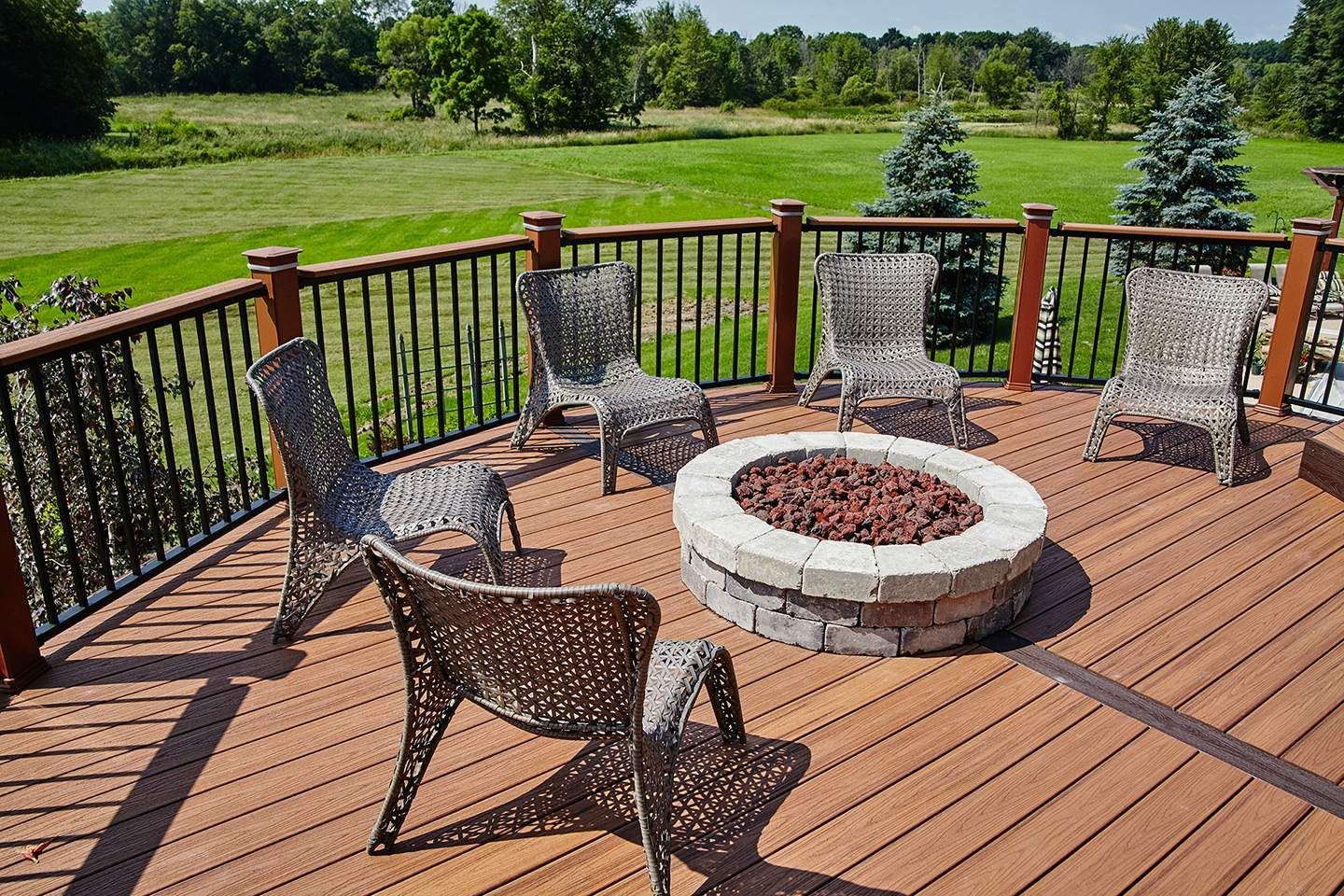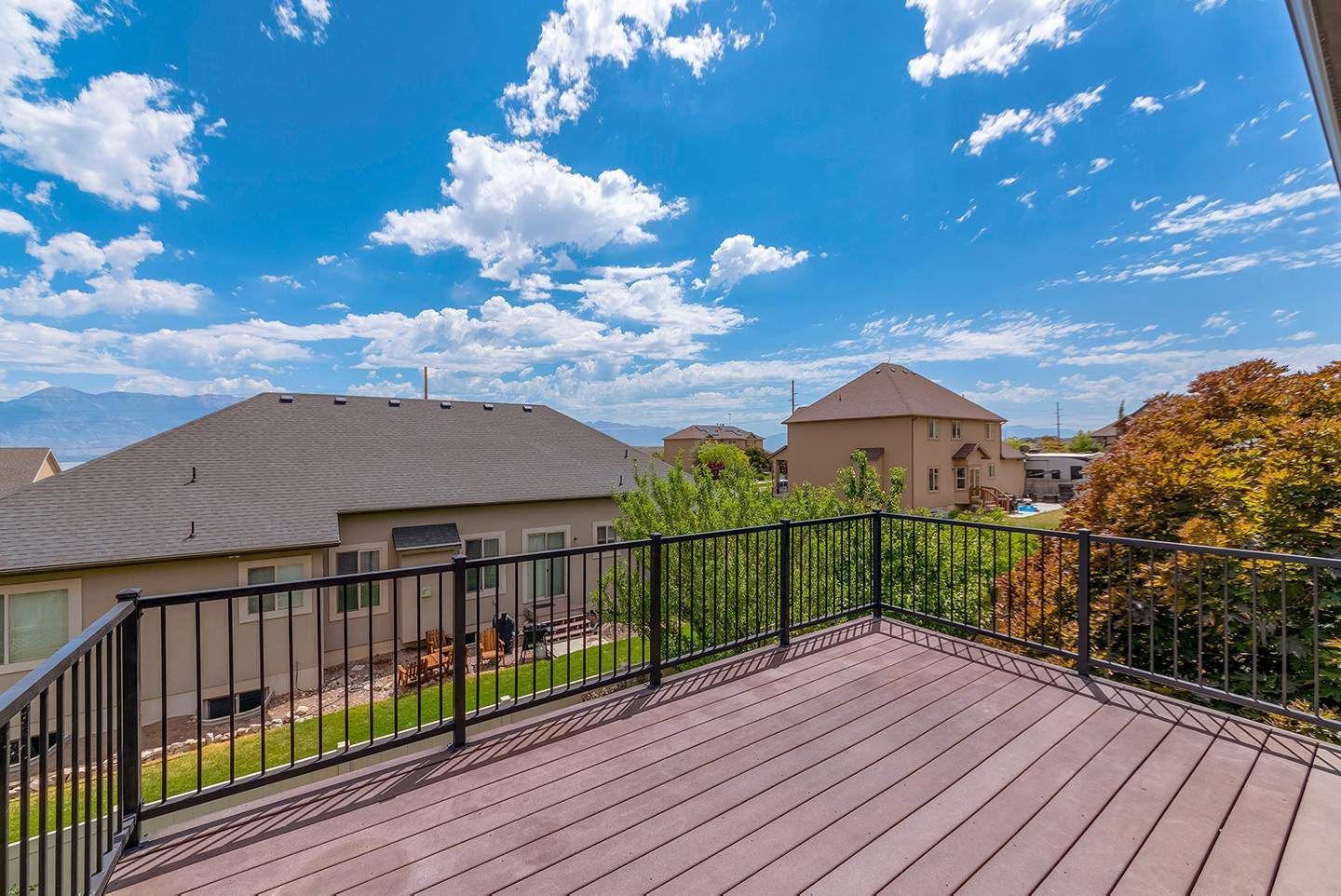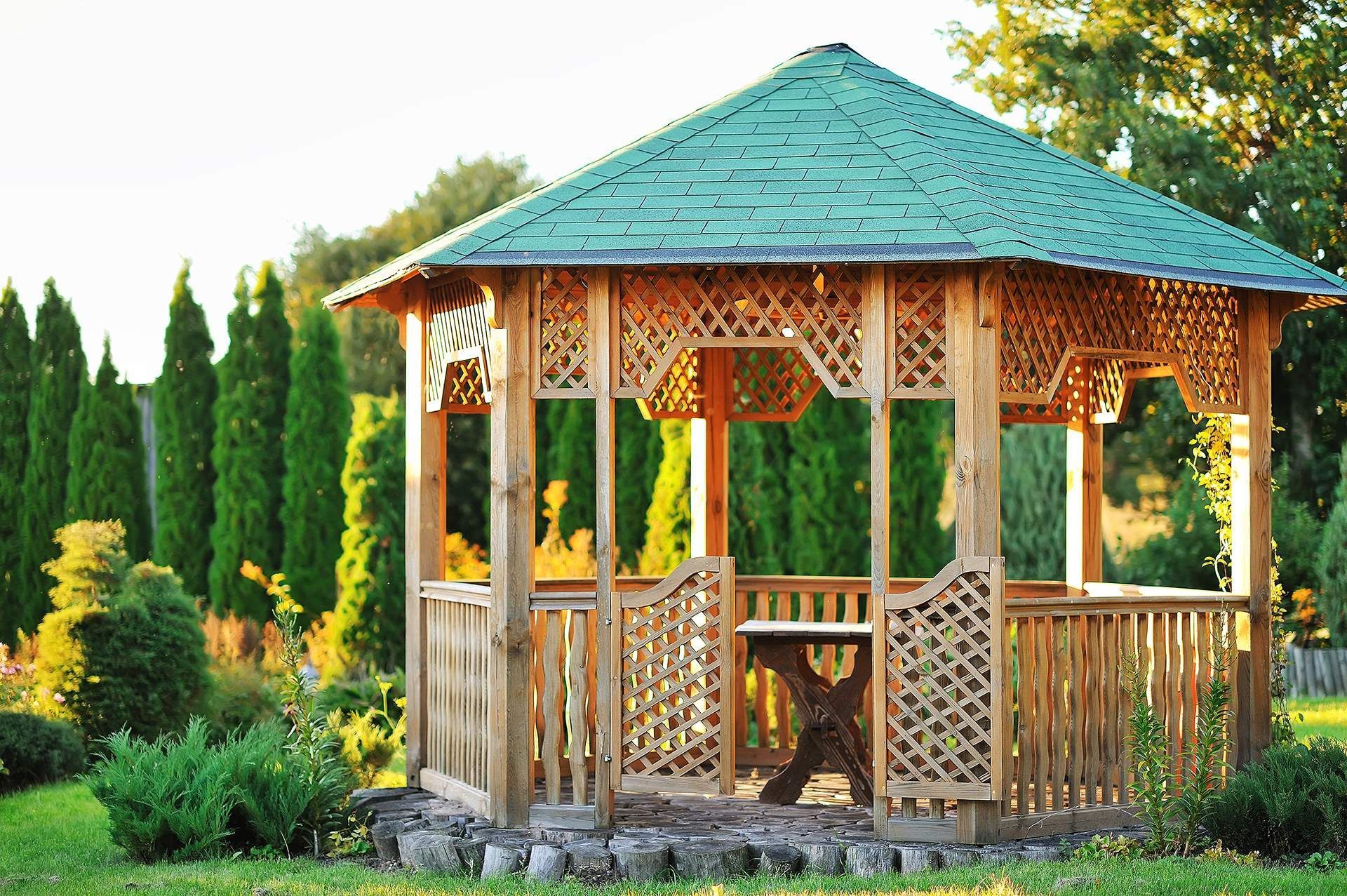Gazebo Construction Trends: Modern Designs for 2025
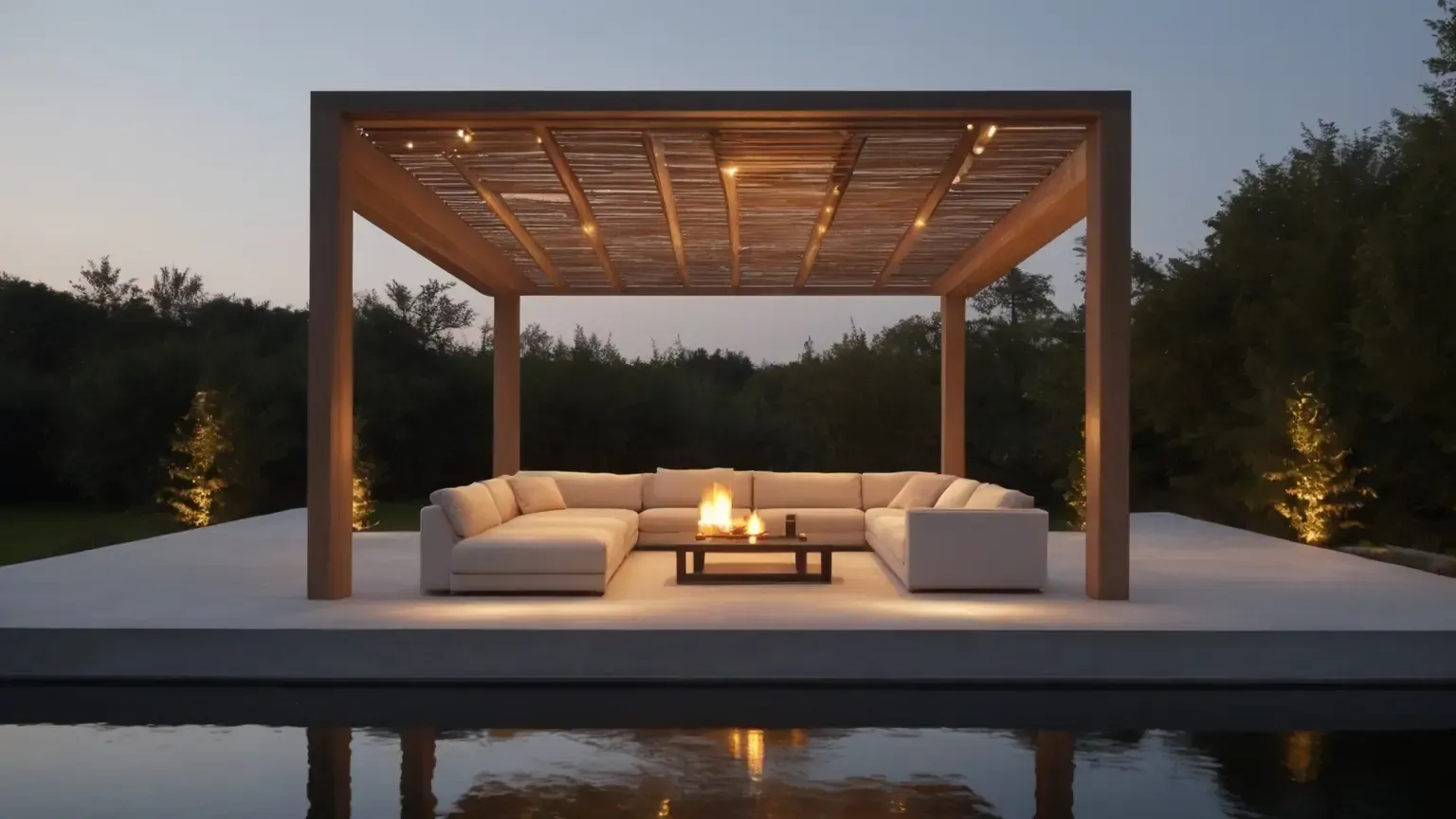
1. Minimalist Elegance in Modern Gazebo Designs
The era of ornate, overly decorative gazebos is fading. Today, simplicity is king. Modern gazebo designs favor clean lines, open-air concepts, and neutral color palettes.
Key Features of Minimalist Gazebos:
- Sleek metal frames – Powder-coated aluminum and steel provide durability without bulkiness.
- Flat or low-slope roofs – Modern gazebos often feature streamlined, geometric roofing.
- Glass walls or open sides – For a more spacious and airy feel, many designs incorporate transparent elements.
Minimalist gazebos offer a contemporary look that complements any outdoor space without overwhelming it.
2. Eco-Friendly Gazebo Trends for Sustainable Living
Sustainability is at the forefront of home design, and gazebo trends are no exception. Homeowners are looking for structures that not only enhance their property but also minimize their environmental footprint.
Popular Eco-Friendly Features:
- Reclaimed wood – Using repurposed materials reduces waste and adds character.
- Bamboo structures – A fast-growing, renewable material that’s both strong and stylish.
- Green roofing – Incorporating plants on a gazebo’s roof enhances insulation and air quality.
- Solar-powered lighting – Energy-efficient LED lights powered by solar panels reduce electricity usage.
By incorporating trendy gazebo materials that prioritize sustainability, we create long-lasting structures that benefit both homeowners and the environment.
3. High-Tech Smart Features in Modern Gazebo Designs
Technology is transforming outdoor spaces, making modern gazebo designs more functional than ever. Home automation systems now extend beyond indoor spaces, bringing convenience and entertainment outdoors.
Smart Features Gaining Popularity:
- Automated lighting – LED lights with motion sensors or app-controlled dimmers.
- Built-in speakers – Weatherproof sound systems for entertainment.
- Smart heating and cooling – Infrared heaters and ceiling fans for year-round comfort.
- Wi-Fi-enabled controls – Control lighting, music, and temperature from your phone.
As smart technology becomes more accessible, adding these features to a gazebo enhances both comfort and usability.
4. Trendy Gazebo Materials for 2025
The materials used in modern gazebo designs have evolved to prioritize durability, aesthetics, and sustainability. Some materials are replacing traditional wood due to their weather resistance and low maintenance.
Top Material Choices:
- Composite wood – A durable, eco-friendly alternative to natural wood.
- Polycarbonate roofing – Lightweight, shatter-resistant, and UV-blocking for better shade.
- Weather-treated steel – Rust-resistant coatings extend the lifespan of metal gazebos.
- Stone bases and accents – Natural stone adds a luxurious, sturdy feel to the structure.
Choosing the right trendy gazebo materials ensures longevity and reduces the need for frequent repairs.
5. Multi-Functional Gazebos: More Than Just Shade
A gazebo is no longer just a decorative structure—it’s an extension of the home. Homeowners are transforming their gazebos into fully functional spaces that serve multiple purposes.
Popular Multi-Use Gazebo Trends:
- Outdoor kitchens – Built-in grills, countertops, and dining areas for entertaining.
- Home offices – A private, shaded workspace in the backyard.
- Yoga and meditation retreats – A peaceful, open-air environment for relaxation.
- Hot tub enclosures – Gazebos designed to provide privacy and weather protection.
Customizing a gazebo for multiple uses maximizes space and increases property value.
6. Customization: The Key to Unique Modern Gazebo Designs
No two gazebos need to be the same. Personalization is a major factor in gazebo trends, allowing homeowners to tailor designs to fit their specific needs.
Ways to Personalize a Gazebo:
- Custom lighting – Chandeliers, LED strips, or lantern-style fixtures.
- Decorative screens – Laser-cut metal or wooden panels add artistic flair.
- Furniture integration – Built-in benches, swings, or hammock hooks.
- Color and finish selection – From rustic wood stains to modern matte blacks.
At Lakeside Deck Builders, we work closely with clients to bring their vision to life, ensuring every gazebo is both functional and visually stunning.
7. The Future of Gazebo Trends: What to Expect Beyond 2025
As outdoor living continues to gain popularity, gazebos will become even more advanced. Future modern gazebo designs may include:
- Modular designs – Expandable and adjustable gazebos that adapt to different spaces.
- Smart glass technology – Glass panels that tint or clear up based on sunlight levels.
- Sustainable construction innovations – Bio-based composites and self-healing materials.
The future of gazebos is all about blending aesthetics, function, and technology.
Elevate Your Outdoor Space with Modern Gazebo Designs
The evolution of gazebo trends in 2025 is all about combining style, sustainability, and smart features. Whether you’re drawn to minimalist elegance, eco-friendly builds, or high-tech enhancements, there’s a design trend to fit your vision.
At
Lakeside Deck Builders, we specialize in crafting beautiful, durable gazebos using the latest trendy gazebo materials. If you’re looking to transform your outdoor space, our team is here to bring your ideas to life. Contact us today at
262-221-4321 or send us an email at
lakesidecontractingmke@gmail.com to start your gazebo project!
Frequently Asked Questions
1. What is the difference between a four-season sunroom and a three-season sunroom?
A four-season sunroom is designed for year-round use with high-quality insulation, double- or triple-pane windows, and a built-in sunroom climate control system. It stays warm in winter and cool in summer, just like the rest of your home. A three-season sunroom, on the other hand, is meant for use in spring, summer, and fall. It lacks full insulation and climate control, making it less comfortable in extreme temperatures.
2. Does a four-season sunroom increase home value?
Yes! A four-season sunroom adds valuable living space to your home and increases its market value. Since it is fully insulated and integrated into the home’s HVAC system, it functions as an additional room, making it more appealing to potential buyers. In contrast, a three-season sunroom offers a beautiful retreat but does not have the same impact on resale value due to its limited usability in colder months
3. How does sunroom climate control work in a four-season sunroom?
A four-season sunroom is connected to the home’s existing HVAC system or equipped with independent heating and cooling units, such as ductless mini-splits. This ensures a comfortable temperature throughout the year. A three-season sunroom typically relies on ceiling fans, space heaters, or portable AC units, but it does not have built-in sunroom climate control, making it less effective in extreme weather.
4. Is a three-season sunroom more affordable than a four-season sunroom?
Yes, a three-season sunroom is a more budget-friendly option because it requires fewer materials, less insulation, and no permanent HVAC connection. It is a great choice for homeowners who want additional space for relaxation without the higher costs of a four-season sunroom, which includes advanced insulation and climate control features.
5. Which sunroom option is best for year-round use?
If you want a comfortable space in all seasons, a four-season sunroom is the best choice. Its insulation, energy-efficient windows, and sunroom climate control system ensure a stable indoor temperature, making it functional throughout the year. A three-season sunroom is ideal for those who only need a sunroom during milder months and prefer a more cost-effective installation.
